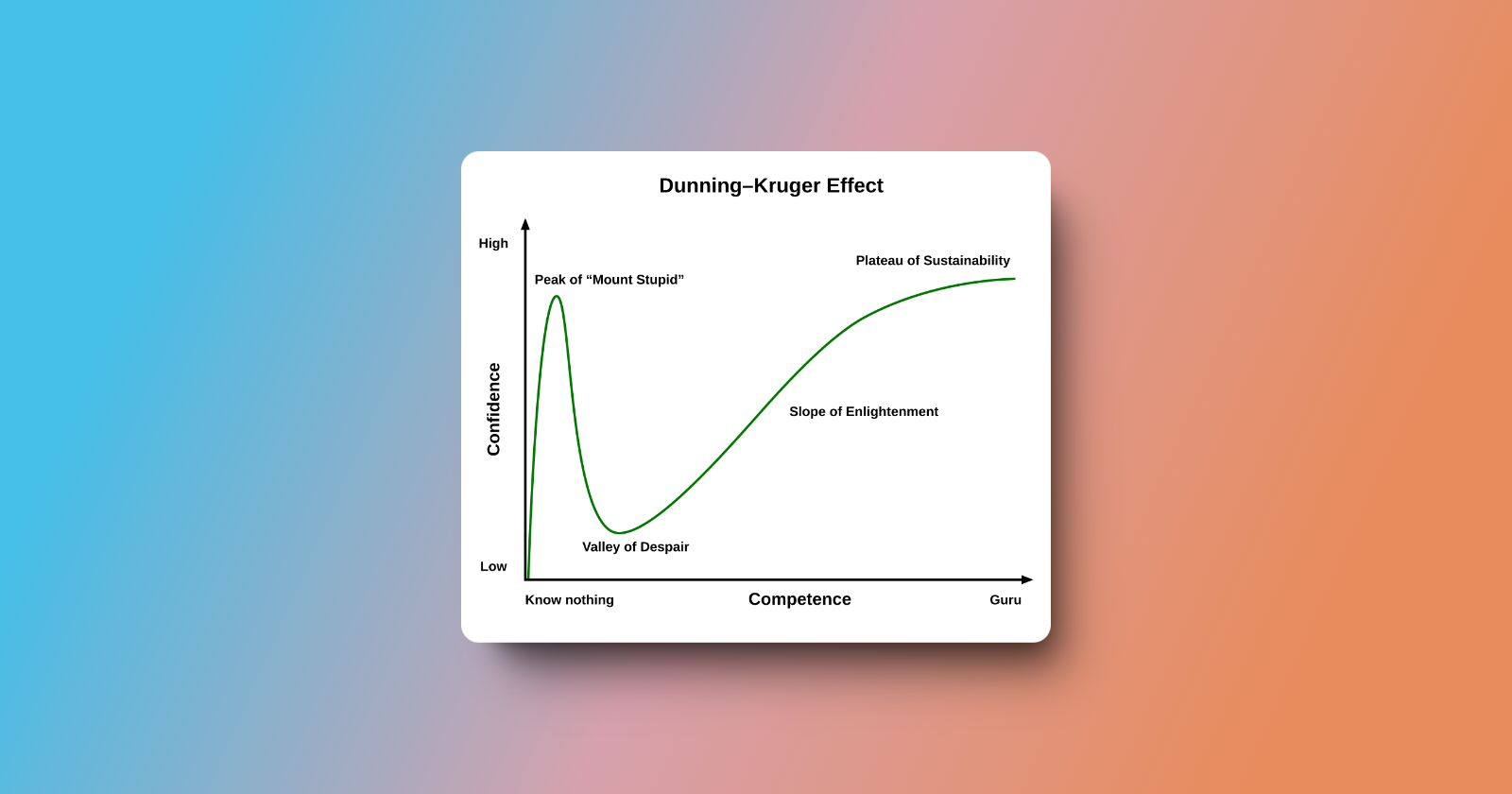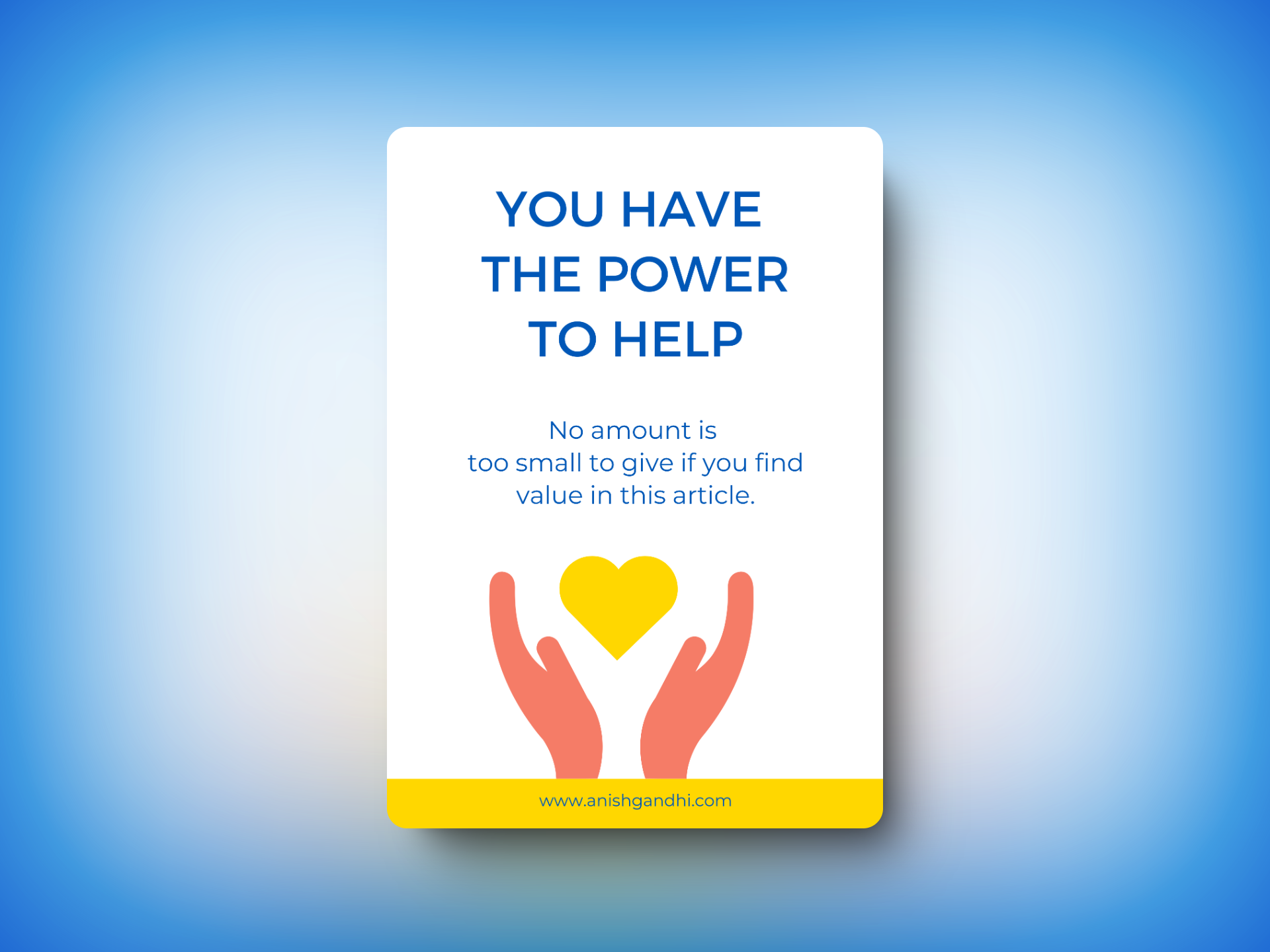The learning curve of the bubble (no-code) developer explained using the dunning-Kruger effect
 Anish Gandhi
Anish GandhiTable of contents
- What is the Dunning-Kruger effect?
- The Dunning-Kruger Effect in No-Code Development
- The “Peak of Mount Stupid” for No-Code Developers
- The "Valley of Despair" for No-Code Developers
- The "Slope of Enlightenment" for No-Code Developers
- The "Plateau of Sustainability" for No-Code Developers
- Overcoming the Dunning-Kruger Effect as a No-Code Programmer
- Help me!

What is the Dunning-Kruger effect?
The Dunning–Kruger effect is a cognitive bias in which people with limited competence in a particular domain overestimate their abilities. It was first described by Justin Kruger and David Dunning in 1999.
It can affect anyone, but it's more likely to happen to people who lack knowledge or skills, are overconfident, or are poor performers. The Dunning-Kruger effect can also affect people who excel in a given area. These people may underestimate their abilities because they think the task is simple for everyone.
The Dunning-Kruger Effect in No-Code Development
At first, the no-code landscape feels like an exciting world of possibilities. With a few clicks and drag-and-drop functionalities, you can create a working prototype in no time. For beginners, this immediate success may lead to overconfidence. After all, if you’ve built a functioning app in days, how hard could the rest of it be?
Here’s where the Dunning-Kruger Effect comes into play. The initial ease of creating something tangible can lead to the belief that no-code programming is far simpler than it actually is. This false sense of mastery often leads to a harsh reality check when more complex tasks—like optimizing performance, integrating APIs, or solving bugs—require deeper knowledge and problem-solving skills.
The “Peak of Mount Stupid” for No-Code Developers
In the Dunning-Kruger Effect, beginners often reach what’s called the "Peak of Mount Stupid"—a phase where confidence is high, but actual knowledge is still limited. For no-code developers, this peak occurs after they’ve created a few basic applications but have yet to encounter the more intricate challenges that come with real-world projects.
At this stage, many no-code programmers might believe they’ve mastered the platform. They might take on more complex projects without realizing the potential pitfalls ahead. This overconfidence can lead to errors, miscommunication with clients, and even stalled projects when they encounter problems they aren’t equipped to solve.
The "Valley of Despair" for No-Code Developers
Inevitably, the beginner no-code programmer will encounter challenges they aren’t prepared for, such as a complex client request or unforeseen technical roadblocks. This marks the entry into the "Valley of Despair," where the realization of how much they don’t know hits hard. It’s a humbling experience that often leads to frustration, self-doubt, and, for some, giving up entirely.
However, this valley is a necessary part of the learning process. It’s where true growth begins, as no-code programmers realize the depth and complexity of the field and start to seek more knowledge.
The "Slope of Enlightenment" for No-Code Developers
After weathering the Valley of Despair, the dedicated no-code programmer starts climbing what’s called the "Slope of Enlightenment." This is the phase where they begin to truly understand the nuances of no-code development, not just at a surface level but in a deeper, more strategic sense.
Developing Real Expertise
As programmers push through complex challenges, they start developing a more refined skill set. They begin to understand platform limitations, how to optimize workflows, and which plugins or APIs can save time and improve functionality. This stage is about building real competence, not just the illusion of mastery.Recognizing Patterns
At this stage, no-code programmers start recognizing patterns in the problems they solve. They can anticipate potential issues and have a toolkit of solutions ready for common problems. This marks the transition from reactive problem-solving to proactive development.Confident but Not Complacent
Confidence returns on the Slope of Enlightenment, but this time it’s rooted in real experience. The no-code developer has learned to balance confidence with humility, knowing there’s always more to learn but feeling equipped to take on most challenges.
The "Plateau of Sustainability" for No-Code Developers
Once no-code developers have honed their skills and built a solid foundation of experience, they reach the "Plateau of Sustainability." This stage represents the point at which they can consistently deliver high-quality projects, efficiently handle complex requirements, and troubleshoot effectively.
Building Reliable Systems
At the Plateau of Sustainability, no-code programmers are no longer struggling with the basics. They can now build robust, scalable systems that meet client needs. This stability allows them to take on more significant and more lucrative projects with confidence.Continual Improvement
The Plateau of Sustainability isn’t about stagnation. Instead, it’s about continuous improvement. Developers on this plateau are constantly fine-tuning their processes, learning new tools, and finding ways to deliver better results faster. While they’ve achieved mastery of the no-code platform, they never stop learning.Mentorship and Community Engagement
Developers at this stage often give back to the community. They become mentors, sharing their knowledge with beginners who are still navigating the early phases of the Dunning-Kruger Effect. This engagement not only helps others but also reinforces their understanding.
Overcoming the Dunning-Kruger Effect as a No-Code Programmer
To successfully navigate the stages of the Dunning-Kruger Effect, the Slope of Enlightenment, and the Plateau of Sustainability, no-code programmers should follow these strategies:
Acknowledge What You Don’t Know
Stay humble in the early stages of no-code development. Recognize that what feels easy at first is only the beginning, and there is always more to learn.Seek Mentorship and Feedback
Surround yourself with experienced developers who can provide constructive feedback. This will help you identify your blind spots and accelerate your learning curve.Embrace Challenges and Failure
Don’t shy away from difficult projects. Embrace the mistakes and frustrations that come with the Valley of Despair. They are stepping stones to greater understanding.Invest in Continuous Learning
Mastery is not a final destination; it’s an ongoing process. Stay curious, take courses, and experiment with new no-code tools and techniques to keep growing.Contribute to the Community
Once you reach the Plateau of Sustainability, consider becoming a mentor or contributor to the no-code community. Teaching others will reinforce your expertise.
Hope you will be more self-aware after reading this.

Help me!
If you enjoyed this post and found it helpful, Kindly consider supporting my work by buying me a coffee! Your support helps me create more valuable content and continue sharing useful resources. Thank you!
Subscribe to my newsletter
Read articles from Anish Gandhi directly inside your inbox. Subscribe to the newsletter, and don't miss out.
Written by

Anish Gandhi
Anish Gandhi
✔️ Certified Bubble.io Developer with 2+ Years of experience in creating scalable responsive web applications. ✔️ Top Rated Plus Upwork Freelancer ✔️ Canvas framework expert